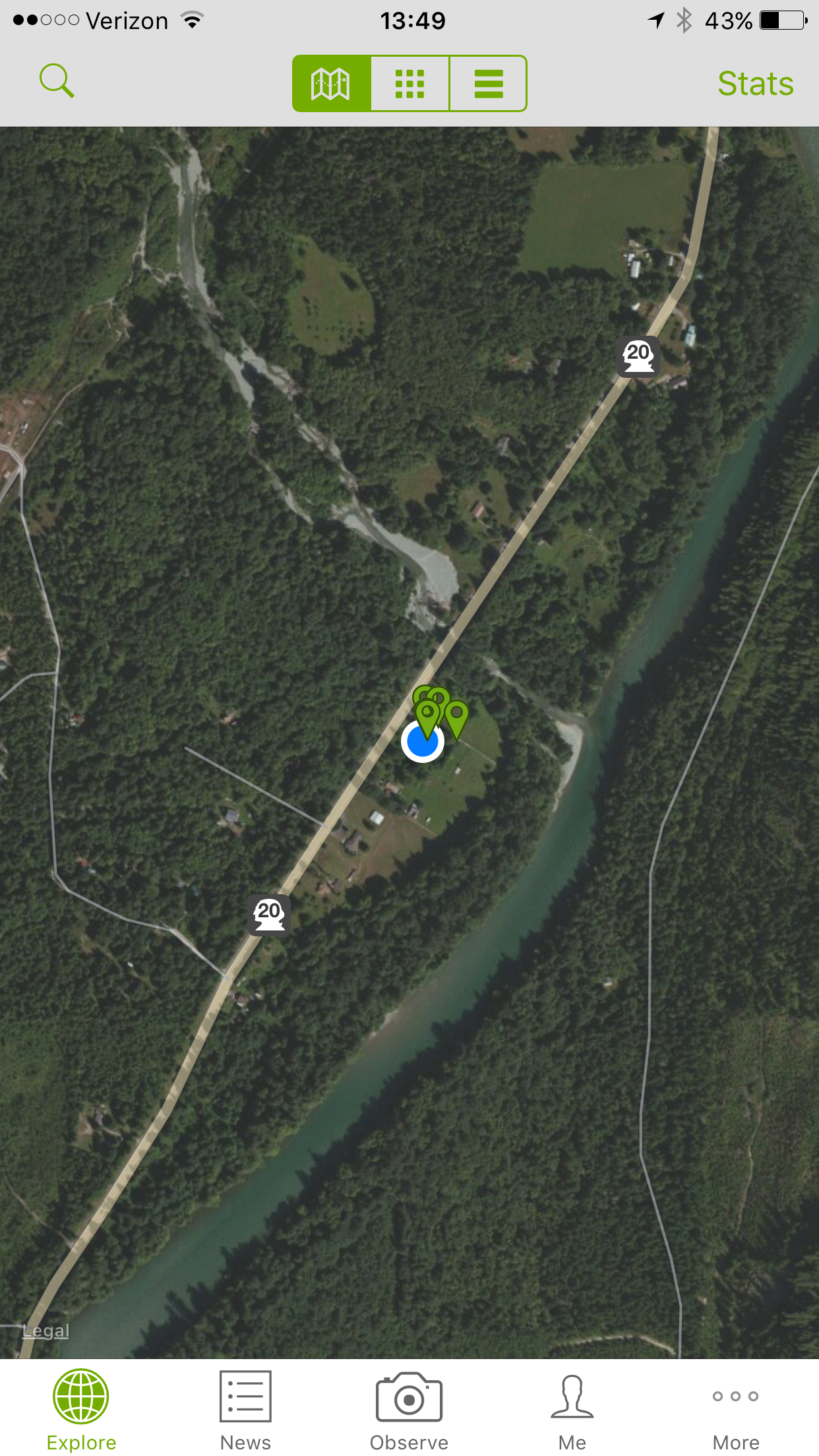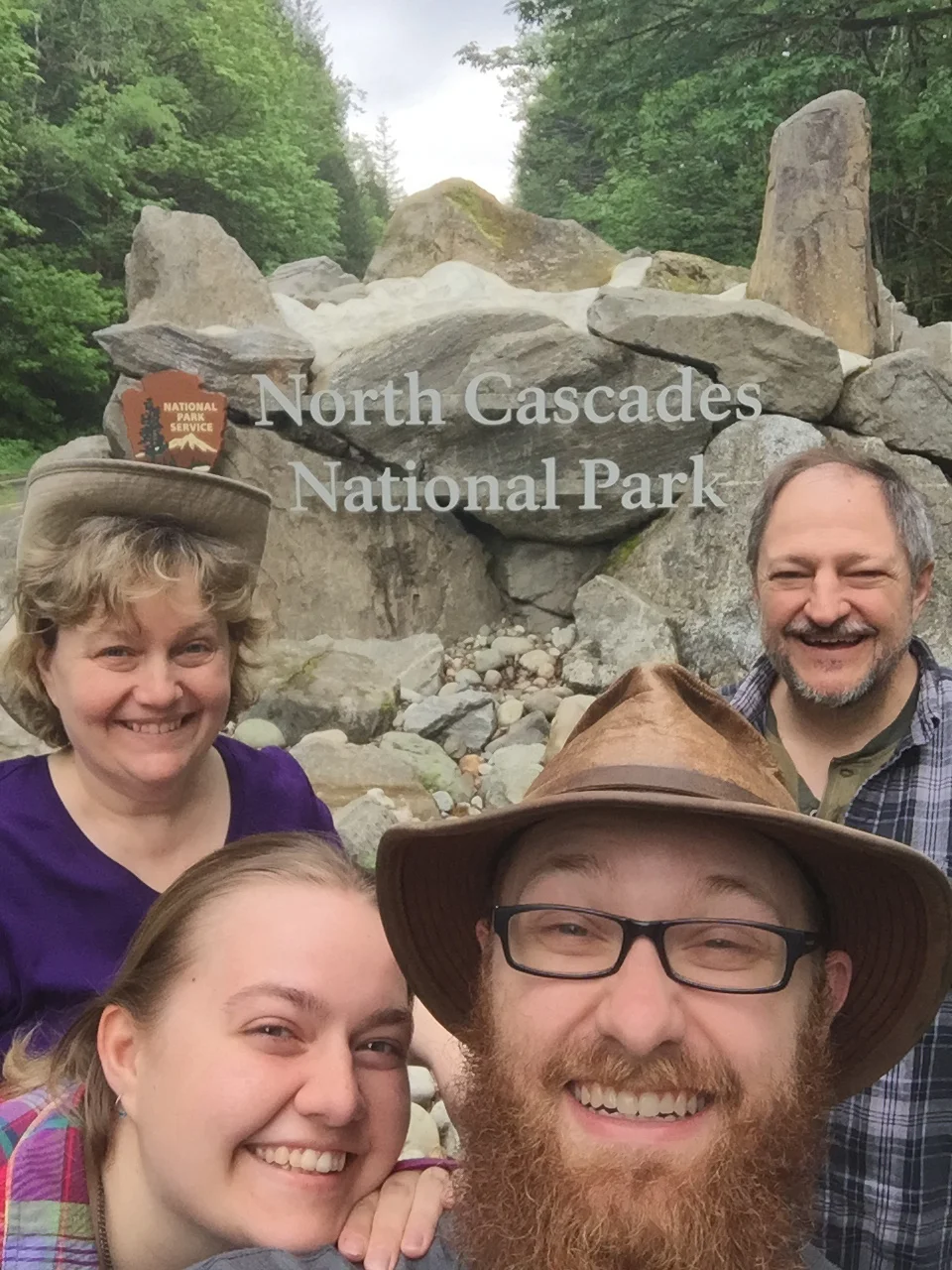This year students in the Kulshan Creek Neighborhood Youth Program have been focusing on the watersheds all around them. They have been everywhere imaginable in this journey: from the sub-alpine during Mountain School to getting soaked at Rasar State Park. But in late September they got to experience firsthand where some of this water ends: Bellingham Bay.
An Open Letter to the 16th Cohort
Dear C16,
Welcome to the North Cascades ecoregion! If you have lived here your whole life or if this is your first time here, you are going to get to know more about the life in these mountains than you ever thought possible. Between hiking, tracking, teaching and paddling, in just a year this place will feel like home.
Springing into Learning: Graduate Spring Natural History Retreat
At the Institute, the graduate students of the 15th cohort (C15) have been hard at work this past year teaching Mountain School, assisting in adult programs and visiting non-profits, all while finishing assignments and trying to find some sleep! Every season though, the graduate students leave all that behind to learn from experts in the field and be fully immersed into the wilderness of the North Cascades. Last fall we worked with beavers and hawks. In the winter we dived intosnow ecology and wolverines. Just last week, we ventured out on our last natural history retreat where we tracked our natural neighbors, captured native bees and kept up with all of the birds!
Soaked with Knowledge: Kulshan Creek at Rasar State Park
Youth have a unique skill in creating adventures out of anything. So even though I had been to tree planting on Cornet Bay and the Migratory Bird Festival with theKulshan Creek Neighborhood Program, both large and expansive day trips, our last trip to Rasar State Park felt no less adventurous!
The day started off wet. That might seem ubiquitous living in western Washington but we had been without rain for two full weeks at this point. The rain was a welcome change from weeks of dry, hot, sunny days.
Watch your nose: Understanding White-Nose Syndrome and the Bats of the North Cascades National Park
On March 11, hikers found the sick bat about 30 miles east of Seattle near North Bend, and took it to Progressive Animal Welfare Society (PAWS) for care. The bat died two days later, and had visible symptoms of a skin infection common in bats with White Nose Syndrome. -U.S. Fish & Wildlife Service.
This comes across as incredibly serious and dire news for educators, government works, and bat enthusiasts along the west coast. But if you have never heard of white-nose syndrome (WNS), or even knew we had bats in the North Cascades National Park, you might not know how or why this is dire.
Snakes, Amphibians and a whole lot of learning!
Editor’s Note: Do not attempt to capture any wildlife, especially snakes. This class was done with trained professionals who kept all participants safe with decades of experience.
As a graduate student at the North Cascades Institute, most of my experience in environmental education over the past year has been teaching fifth graders inMountain School and graduate natural history retreat classes. Earlier this month I got to experience a whole new side to environmental education at the institute:adult field classes.
Designed to get students of all ages (10-110) into the outdoors, these excursions happen all over the greater North Cascades bio-region. On Mother’s Day I went over to the Methow Valley to help John Rohrer and Scott Fitkin, district biologists, with the Snakes and Amphibians of the Methow Valley class.
iNaturalist: Preparing for the Bioblitz
Are your candles ready? Because this summer the National Park Service turns 100!Instead of gettingAmerica’s best idea a birthday cake or a gift card, they want only one thing for this special occasion: to get all citizens involved with America’s outdoors. One of the easiest ways to get involved is through their BioBlitz:
A BioBlitz is a 24-hour event in which teams of volunteer scientists, families, students, teachers, and other community members work together to find and identify as many species of plants, animals, microbes, fungi, and other organisms as possible. In 2016, BioBlitz goes national. The cornerstone National Parks BioBlitz: Washington, D.C. will take place May 20-21, with more than a hundred concurrent BioBlitzes happening at national parks across the county. -National Park Service
Cascadian Farm: It all started in the Skagit!
While shopping around your local grocery store, you might have seen projects in the organic section with the brand title “Cascaidan Farm Organic: Founded in the Skagit Valley, WA since 1972.” The products can be found in stores nation wide. Last week, however, I took a bicycling adventure to the Roadside Stand of the farm. It serves not only as a great place to get snacks on a long road trip, but also serves as an environmental education tool in the valley.
I’ll let them tell their founding story:
The story of Cascadian Farm begins with the story of our founder, Gene Kahn. 40 years ago, Gene was an idealistic 24-year old grad-school dropout from Chicago, who just wanted to make a difference in the world. He recognized the delicate balance between nature and humans. Inspired by reading “Silent Spring” and “Diet For A Small Planet”, Gene wanted to go back to the land and farm in a way that would not harm the natural beauty of the earth or her inhabitants. So he set out to farm organically on a little stretch of land next to the Skagit River in the Cascade Mountains of Washington. –Cascadian Farm
Creating Tradition: Sixth Annual Migratory Bird Festival
Any cool event can happen once. Maybe twice. After so many years the “just a cool idea” starts to be folded into the fabric of a community. Hosted by the U.S. Forest Service at Ebey’s Landing National Historical Park with support from all the following partners, the Migratory Bird Festival is becoming one of the newest traditions in the Northwest Region.
Partners of the Migratory Bird Festival
• National Park Service
• International District Housing Alliance
• Mount Vernon Police Department
• Catholic Housing Services of Western Washington
• North Cascades Institute
Three groups of learners ranging in ages of 5 to 85 descended on Fort Casey at Ebey’s Landing National Reserve near Coupleville, WA for two days of learning, service and fun on April 30, 2016.
Sharing Home: Three days of adventure in Washington
Having moved into the North Cascades Eco-region in July for the graduate residency program, these mountains are finally starting to feel like home. Month after month I have been engaged in the cycle of the seasons, the habits of natural neighbors and the rhythms of the Skagit. So when I knew my family was coming for only a three day visit, I panicked. How can I show them all that I have learned about this amazing place in only three days? I couldn’t, and I didn’t, but we crammed as much as we could and went to four main locations for an amazing adventure: around theEnvironmental Learning Center, the Methow Valley, theSalish Sea and the City of Seattle.
While my family feels at home in the outdoors, Washington is a completely different beast than our wilderness. Coming all the way from Pittsburgh, PA my parents (Kurt and Pam) and older sister (Abby) reminded me of my general first reaction when I arrived: “Washington is just like Pennsylvania, except exaggerated. The mountains are higher, the rivers purer and the trees much, much taller.” My mother even remarked that it was as if I was living in a fairy tale, the scenery taken right out of a book.
Our first stop on this fairy tale adventure was a place I don’t even notice anymore. On my daily commute to work I drive past the Gorge Creek Falls, an amazing 242 ft. cascade. Since I see it every day, it fell into the backdrop of the commute. Only when my family was seeing it with new eyes, did I stop and remember how beautiful of a place I get to study in.











